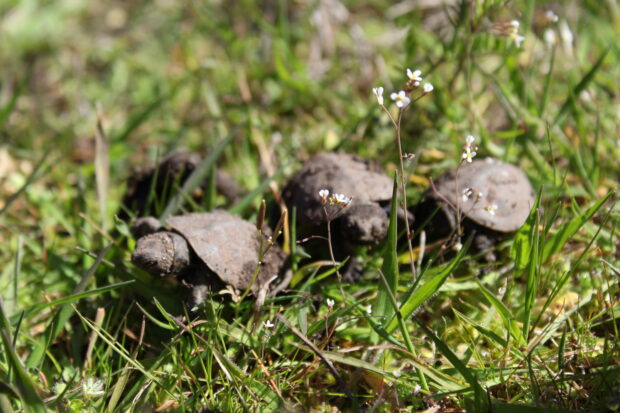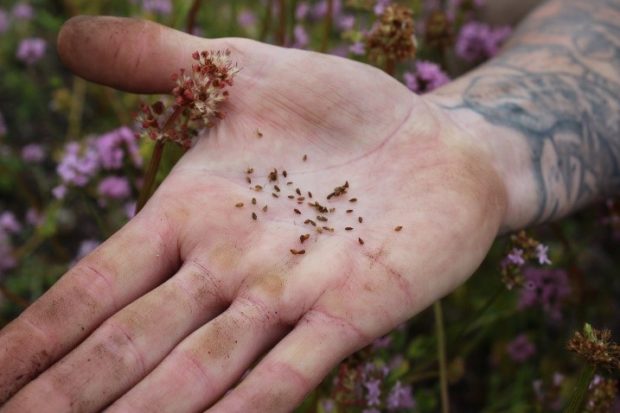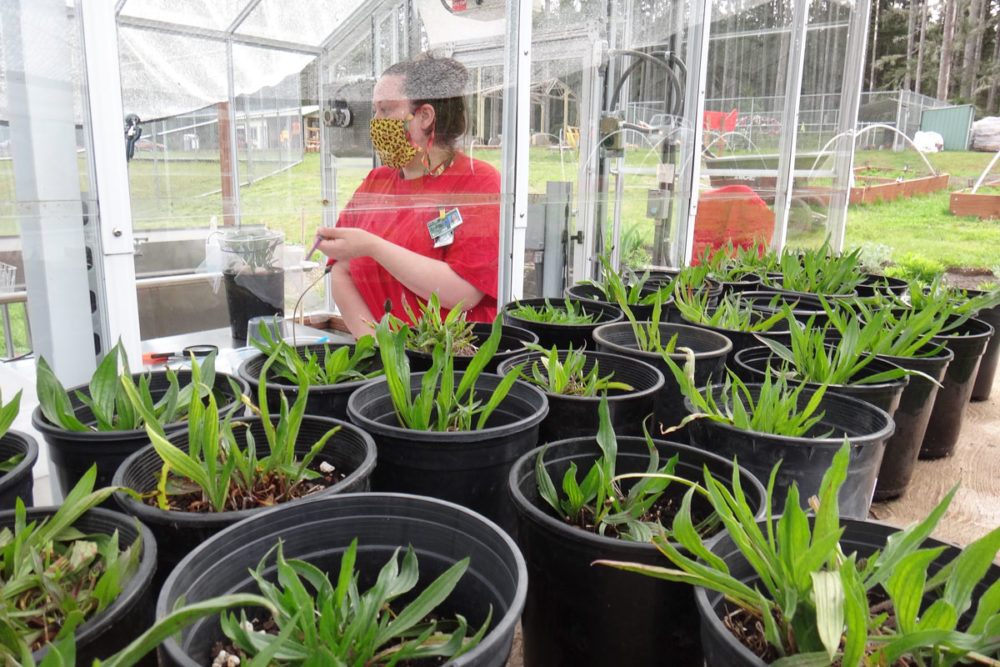By Mikala Waldrup, SPP Ecological Program Coordinator
On Tuesday, April 2nd, the Sustainability in Prisons Project (SPP) team along with the turtle technicians from Cedar Creek Correction Center (CCCC), The Department of Corrections (DOC) Staff, and the Washington Department of Fish and Wildlife staff (WDFW) visited the Pierce County Recovery Site to release western pond turtles (WPT) back to their native ponds after treatment from a shell disease. During this field trip, we released 11 turtles that received follow up care from incarcerated turtle technicians at CCCC after receiving acute veterinary treatment. These turtles, a Washington state listed endangered species, were found to have a shell disease that, left untreated, can be fatal. This shell disease is caused by a keratin eating fungus that infects the WPTs and creates lesions and pitting on their shells. These lesions make their normally hard shells soft. Turtles that show symptoms of shell disease are brought to PAWS Wildlife and Rehabilitation Center (PAWS) or The Oregon Zoo for treatment.
Once treated, the turtles move to CCCC for longer term care. The turtle technicians prepared and fed the turtles a varied diet of smelt, mealworms, night crawlers, turtle pellets, mixed greens, and reptile gel. They also provided daily water changes and weekly tank cleanings to prevent possible infections in the turtles’ post-treatment wounds. With daily behavior observations, the technicians quickly learned the personality each turtle had—some were shy and preferred to hide while others were bold and sassy, preferring to bask all day.
During the 2023-2024 season, SPP and the turtle technicians cared for 23 turtles both before and after the turtles received veterinary care. When reflecting on this season, turtle technician Robert Asagai wrote, “Although this was a program/job provided by SPP and DOC, I really enjoyed it and felt that it wasn’t. I looked forward to coming in everyday and doing something that was outside of everyday prison stuff. It felt like a safe place or a place of peace.”
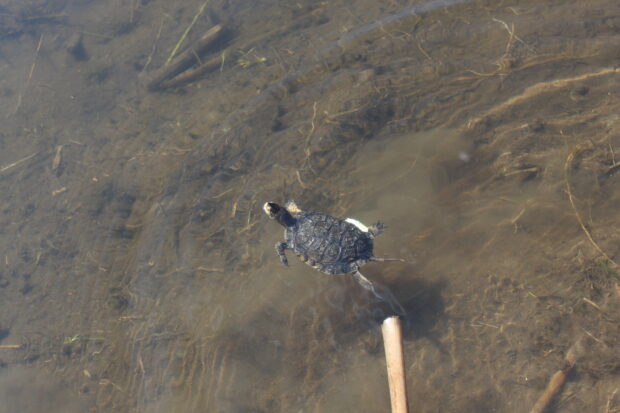
A WPT swimming away upon release.
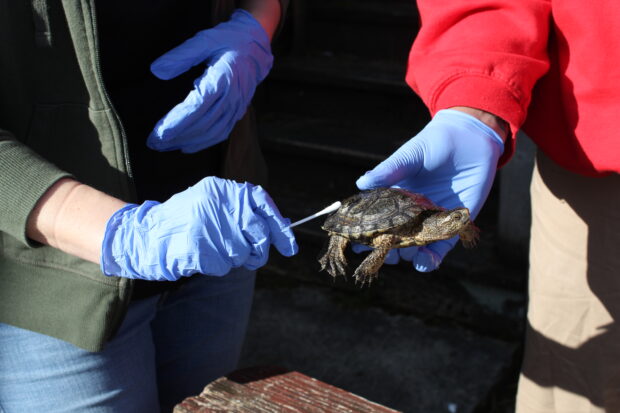
Below: A WPT being swabbed to see if the shell disease is present post treatment prior to release.
Due to the pandemic, this was the first time the technicians and DOC staff have been able to attend a release since 2019, which added a special element to the day. Prior to releasing the turtles back into their ponds, the technicians and wildlife biologist swabbed each turtle to further study shell disease treatment. The technicians work so hard throughout the season caring for the turtles and ensuring they are recovering from their treatments, and it was so great to have them attend the release. It was also neat to see a lot of the concepts that we were learning about together, such as wetland ecology, in person at the recovery site.
During our visit to the Pierce County Recovery Site, the WDFW wildlife biologist took the team on a tour of the recovery area, and we were able to check on several nest sites that had teeny tiny turtle hatchlings. This was a highlight for everyone to see the next generation of a species we are all working to conserve and protect. Upon release, the turtles swam away and rejoined their population just in time for the summer and the WPT mating season. SPP and the Cedar Creek crew are very happy to see the successful release of the WPTs but will be missing the turtles until the next batch are trapped for treatment next season.
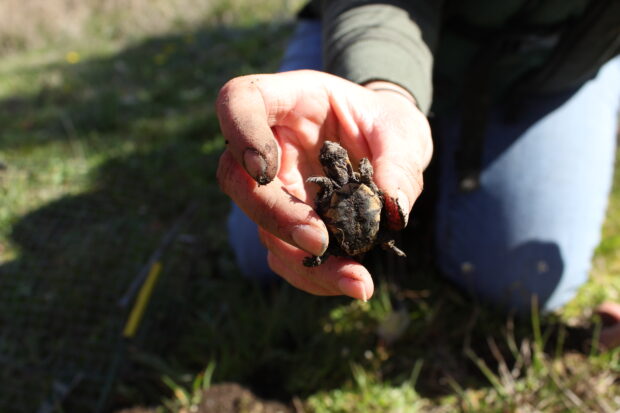
Teeny tiny turtle hatchlings seen at the release site, each no bigger than a half dollar. Photos by SPP staff.
